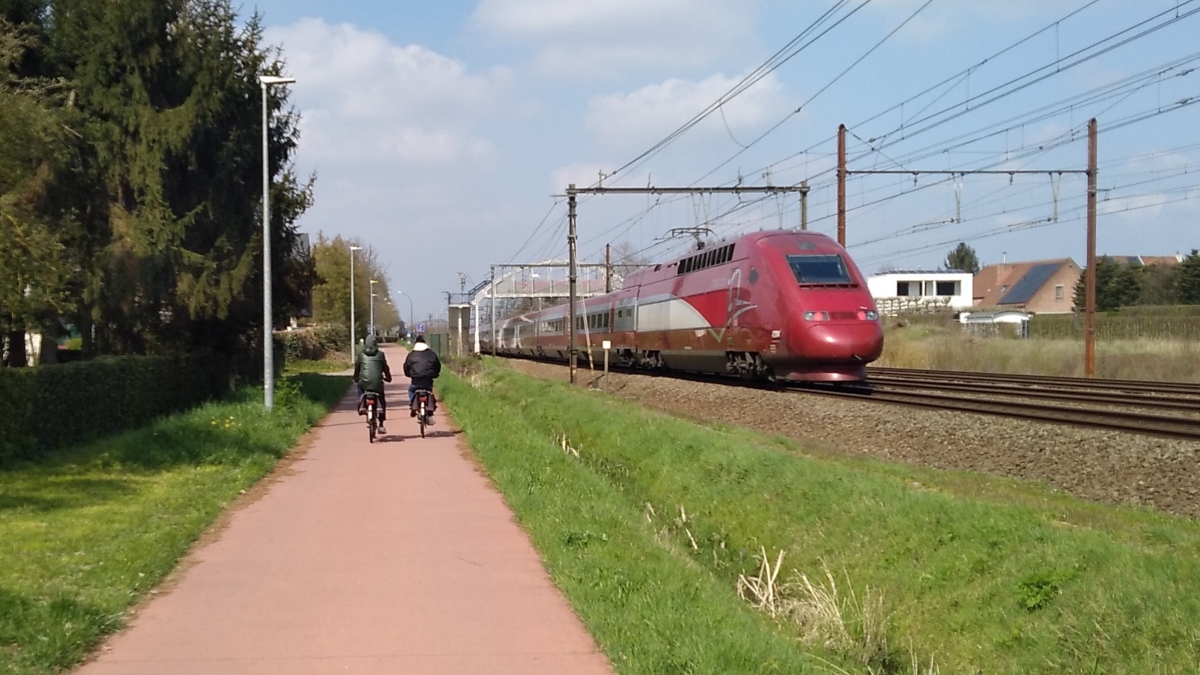
European Parliament TRAN Committee agrees on the need to integrate cycling into the TEN-T network
In its new report on the Trans-European transport network (TEN-T), the European Parliament's Transport Committee has said that major EU transport investments should take walking and cycling into account.
The Committee on Transport and Tourism (TRAN) of the European Parliament adopted today, 13 April 2023, its report on the new TEN-T guidelines. The final wording further improves the draft presented in autumn 2022, making it clear that major European infrastructure investments – such as motorways or railways – should take walking and cycling into account, especially within functional urban areas. ECF has been calling for cycling to be better integrated into TEN-T, the EU's flagship transport policy, and welcomes the report today.
Final TRAN report adopted
The final TRAN report builds on the draft prepared by Barbara Thaler (EPP) and Dominique Riquet (Renew), presented on 26 October 2022. Compared to the initial European Commission’s proposal, the draft already significantly strengthened provisions for urban nodes (major cities with more than 100,000 inhabitants) and extends their territorial scope to functional urban areas. Within those urban nodes, it would be obligatory to integrate cycling infrastructure in new and upgraded roads and railways. The same draft also introduced a definition of EuroVelo, the European cycle route network, and extended the definition of active modes to cover pedelecs. In TEN-T general priorities the rapporteurs proposed to include “seeking synergies across all modes of transport, including active modes, and removing barriers to active mobility, when infrastructure is being upgraded or newly built.”
Following the presentation, other members of the TRAN committee submitted additional proposals, with around 50 amendments directly concerning cycling and active mobility. Cycling amendments were also included in the opinion of the European Parliament's Committee on Internal Market and Consumer Protection (IMCO). After half a year of negotiations, many of these were integrated into the final report, formally adopted today, 13 April 2023. Here are a few highlights:
- “Promotion of active modes infrastructure” has been added to the TEN-T objectives in article 4 of the regulation.
- An obligation to take into account synergies with active modes networks, and in particular EuroVelo network, has been added to article 5. In the current regulation a similar provision is included only in a recital - non-binding part of the document.
- “Providing active modes infrastructure alongside waterways” has been added to additional priorities for inland waterway infrastructure development in article 23.
- The Parliament would also like to oblige the European Commission to prepare, by 31 December 2025 at the latest, harmonised safety standards for cycling and pedestrian infrastructure (article 40).
Could the report be any better? Of course: the obligation to integrate cycling infrastructure in new and upgraded roads and railways could be a general principle, not limited to urban nodes. The regulation could do more to address existing barriers, created by poor design of past investments. And finally, EuroVelo could be a fully-fledged component of the TEN-T. Nevertheless, considering that the current legislation does not include a single word about cycling or walking in the regulatory part, the report represents an amazing step forward. It clearly recognises the need to consider active mobility when planning, implementing and operating the infrastructure for long-distance transport.
What next?
The final report now needs to be adopted by the European Parliament plenary. Afterwards, the final shape of the TEN-T revision will be negotiated in the so-called trilogue between the Parliament, the Council and the Commission.
There are some points on which the key stakeholders already agree, such as including pedelecs in the definition of active modes, including promotion of the active modes in objectives and general priorities of the TEN-T, or integrating pedestrian and cycling paths alongside inland waterways. But with regard to urban nodes, the positions of the Parliament and the Council go in the opposite directions. While the TRAN Committee aims to strengthen the provisions and requirements for urban nodes, the Council aims to water down the same section by rephrasing requirements like "Member States shall ensure" to non-binding "attention shall be given to the following".
To be fair, in some areas the Council’s general approach is more progressive than the TRAN report. For example, the Council added “developing bicycle parking in the vicinity of the stations” among additional priorities for rail projects. TRAN Committee included a similar provision, but limited only to urban nodes, neglecting the potential of combining cycling and rail travel in smaller towns and rural areas. Another positive of the approach is the reduction of the scope of the obligatory upgrade of TEN-T roads to a para-motorway standard. The original Commission proposal threatened to create many new barriers for walking and cycling, by forbidding all at-grade crossings for the whole comprehensive network, the Council proposed to reduce the obligation to “extended core” network.
Thanks to ECF’s work, cycling is prominently represented in the European Parliament report, as well as in the Council of the EU approach. In 2023, we will continue to work with members of the both institutions to ensure that the best of both positions is included in the revised TEN-T regulation.
Interested in learning more about the integration of cycling into the TEN-T network? Join our session on this topic, TEN-T: Integrating cycling into large infrastructure projects on Thursday 11 May at Velo-city Leipzig 2023! Register here.
Topics:
Contact the author
Recent news!
Upcoming events
Contact Us
Avenue des Arts, 7-8
Postal address: Rue de la Charité, 22
1210 Brussels, Belgium









